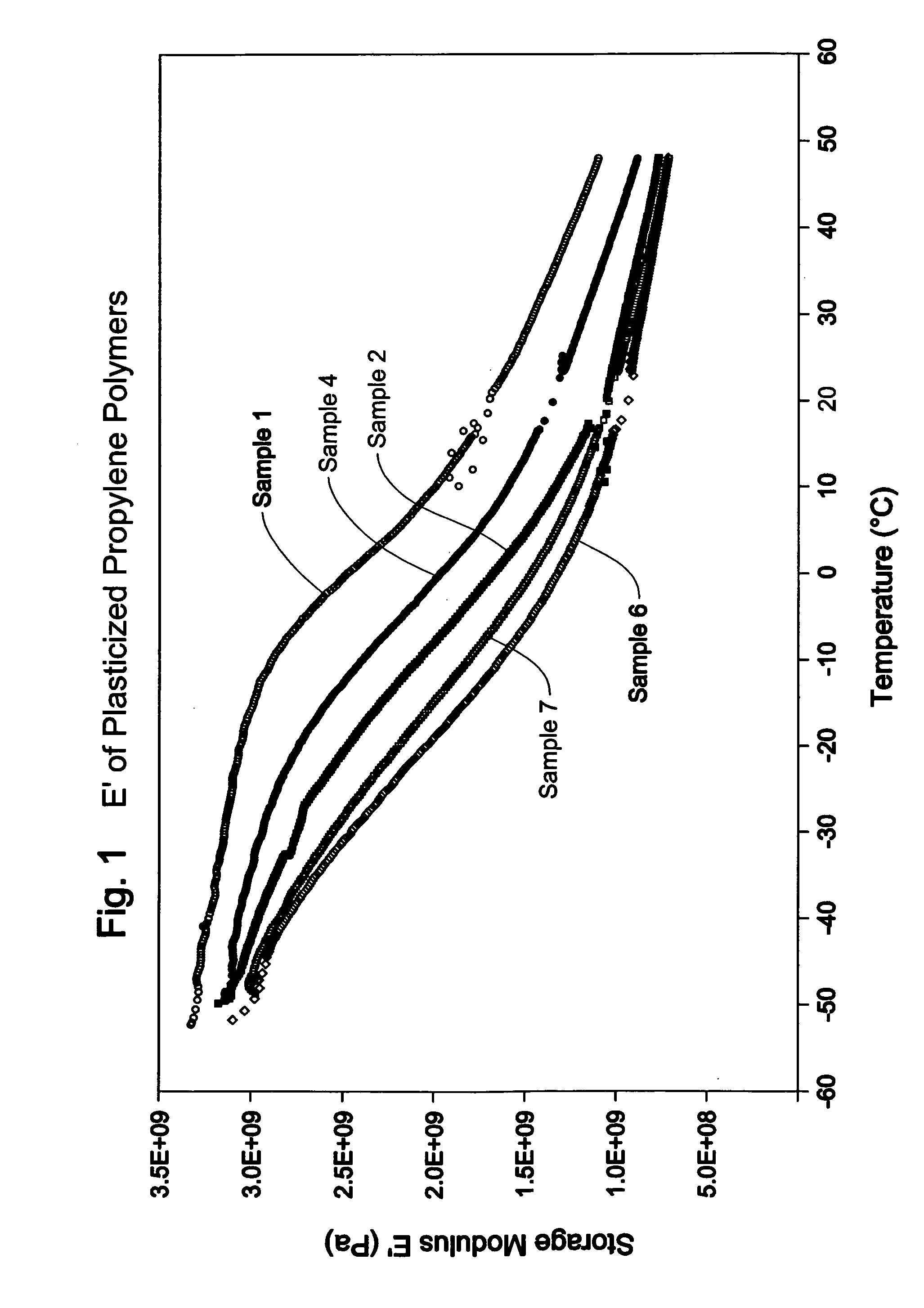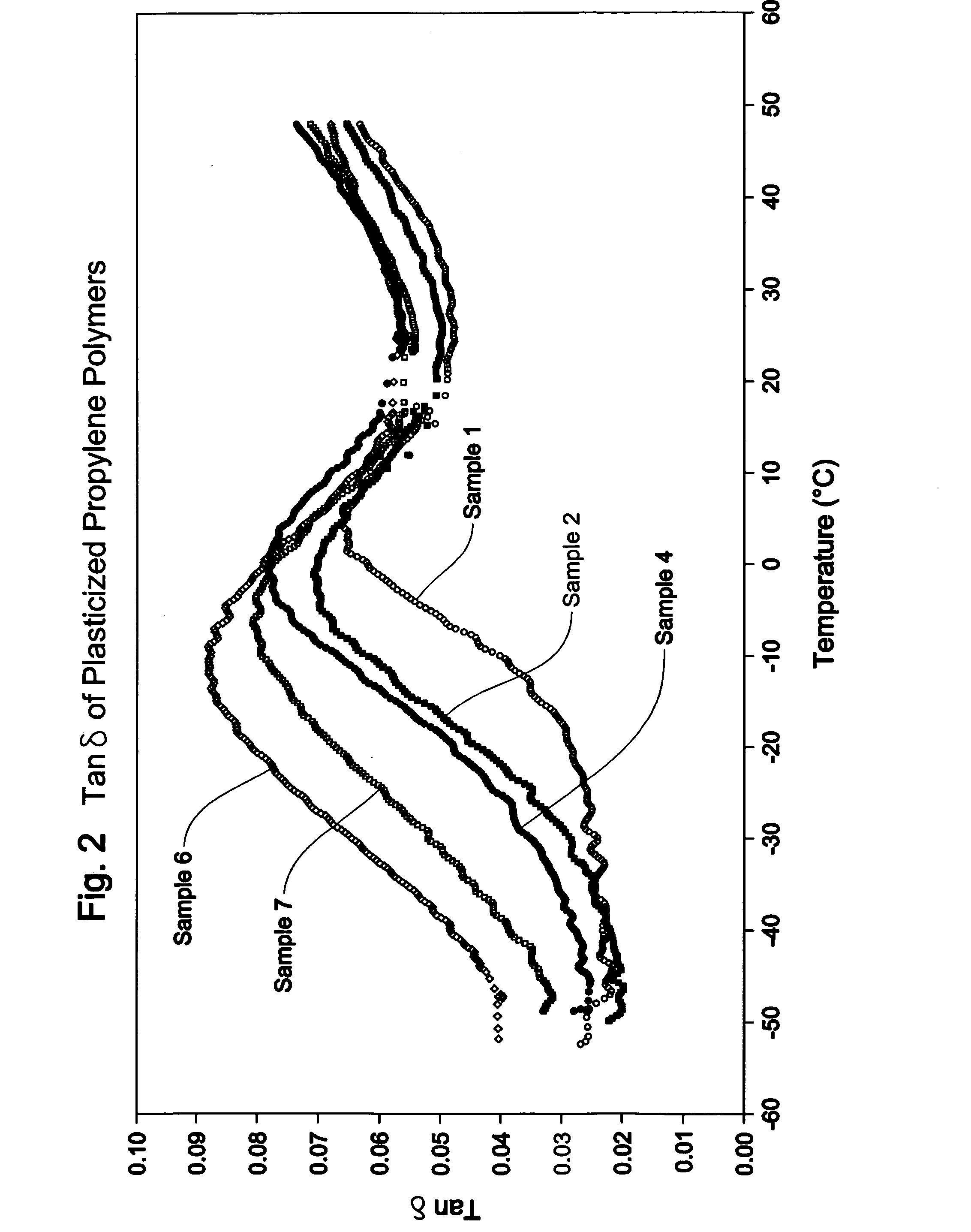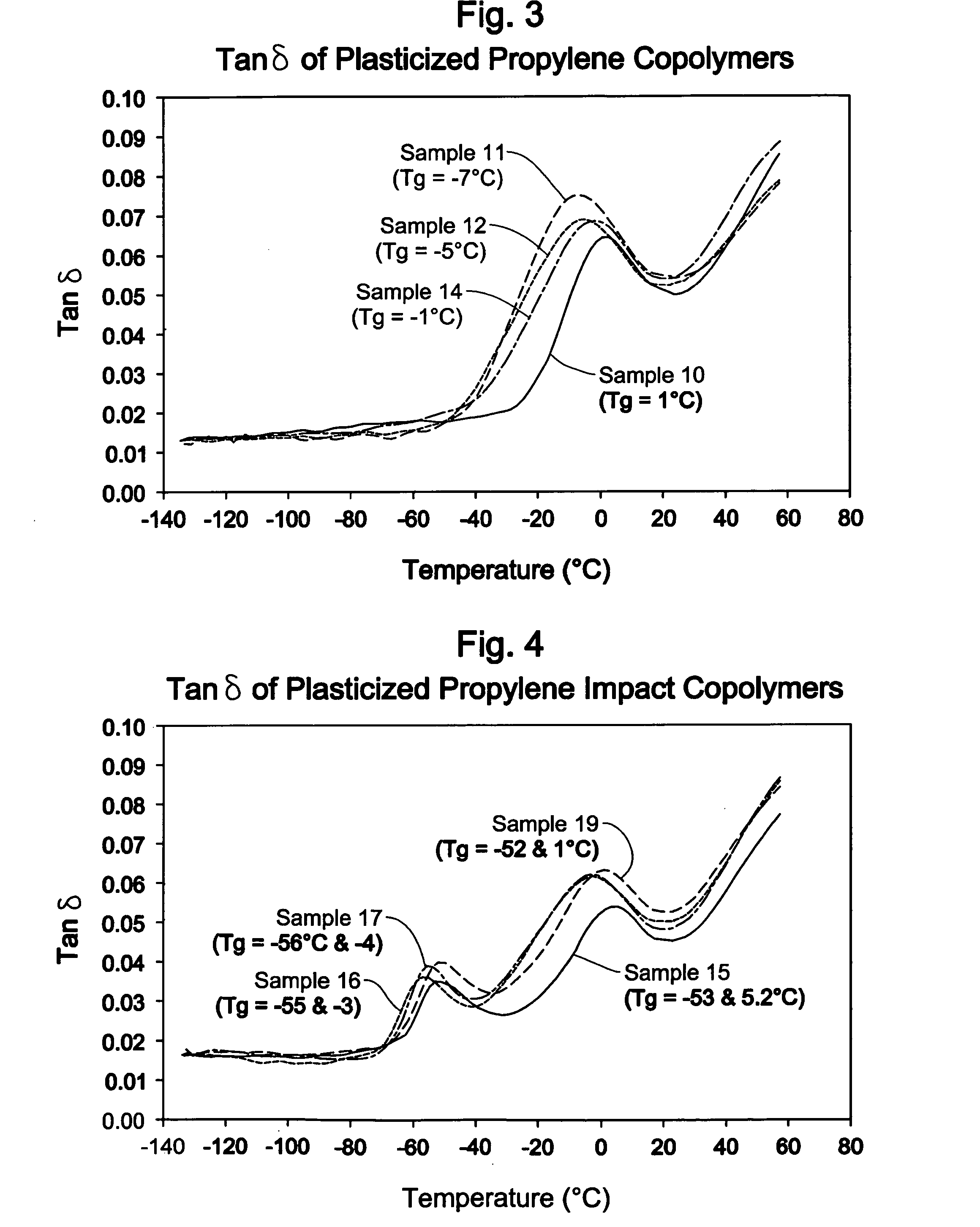Plasticized polyolefin compositions
a polyolefin and composition technology, applied in the field of plasticized polyolefins, can solve the problems of polypropylene homopolymers and copolymers, brittle polyolefins, and relatively high glass transition temperature, and achieve the effect of improving (decreasing) tg
- Summary
- Abstract
- Description
- Claims
- Application Information
AI Technical Summary
Benefits of technology
Problems solved by technology
Method used
Image
Examples
examples
[0089] The present invention, while not meant to be limiting by, may be better understood by reference to the following examples and Tables.
[0090] The glass transition temperature (Tg) and storage modulus (E′) were determined as follows by dynamic mechanical thermal analysis (“DMTA”). Dynamic mechanical testing was conducted by oscillating a solid rectangular beam, fixed at one end, trough an arbitrary angle of deflection. The force and angle of deflection are used to calculate stress and strain respectively. The ratio of the stress to strain yields a modulus. Varying the temperature during the test yields information about the behavior of the material as a function of temperature. The test parameters include a single cantilever; frequency of 1 Hz, start temperature of −130° C., max temperature of 60° C. Temperature is increased at a rate of 2° C. / min. Tan δ is the ratio of E″ / E′ where E″ is the loss modulus and E′ is the storage modulus or elastic modulus. The glass transition tem...
PUM
| Property | Measurement | Unit |
|---|---|---|
| wt % | aaaaa | aaaaa |
| wt % | aaaaa | aaaaa |
| pour point | aaaaa | aaaaa |
Abstract
Description
Claims
Application Information
 Login to View More
Login to View More - R&D
- Intellectual Property
- Life Sciences
- Materials
- Tech Scout
- Unparalleled Data Quality
- Higher Quality Content
- 60% Fewer Hallucinations
Browse by: Latest US Patents, China's latest patents, Technical Efficacy Thesaurus, Application Domain, Technology Topic, Popular Technical Reports.
© 2025 PatSnap. All rights reserved.Legal|Privacy policy|Modern Slavery Act Transparency Statement|Sitemap|About US| Contact US: help@patsnap.com



